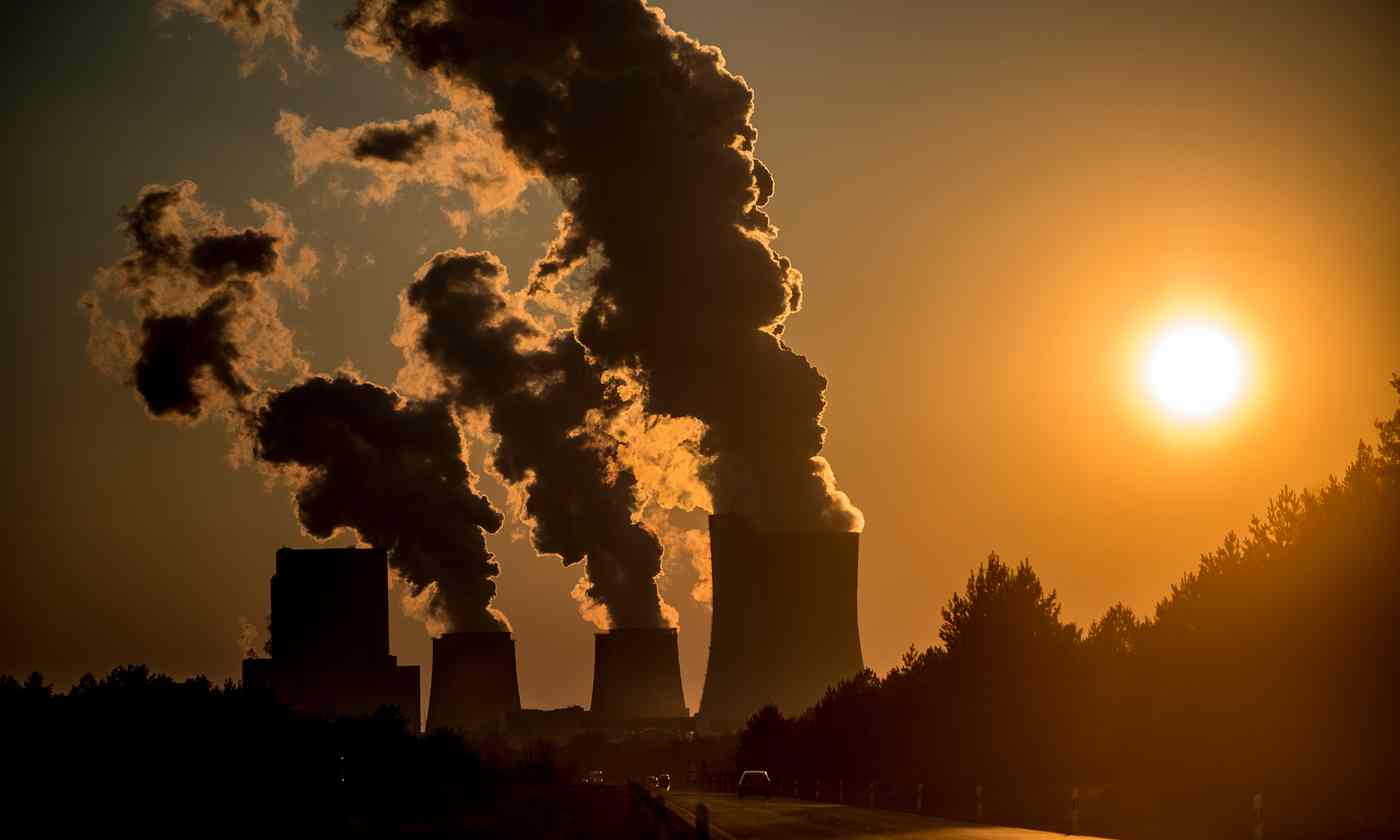Crisálida chama a atenção para este mais recente trabalho coordenado por James Hansen, ex-diretor do Goddard Institute for Space Studies (NASA-GISS) e decano dos estudos sobre as mudanças climáticas, com a colaboração de onze eminentes estudiosos na área de estudos sobre o clima: Makiko Sato, Pushker Kharecha, Karina von Schuckmann, David J Beerling, Junji Cao, Shaun Marcott, Valerie Masson-Delmotte, Michael J Prather, Eelco J Rohling, Jeremy Shakun e Pete Smith. O trabalho intitula-se: “Young People’s Burden: Requirement of Negative CO2 Emissions”:
https://app.box.com/s/t050csk2z20iqk9u14vnllz3i15dh5i0
Submetido à revista Earth System Dynamics journal e ainda não “peer-reviewed”, o artigo em questão tem o objetivo de substanciar um processo movido pela ONG Our Children’s Trust contra o governo dos Estados Unidos por negligência em relação às mudanças climáticas. Esse processo, considerado por Bill McKibben e Naomi Klein, como “the most important lawsuit on the planet right now“, assim se formula:
In 2015, twenty-one youth from across the United States, age 8 to 19, filed a landmark constitutional climate change lawsuit against the federal government in the U.S. District Court for the District of Oregon. Also acting as a Plaintiff is world-renowned climate scientist Dr. James E. Hansen, serving as guardian for future generations and his granddaughter. Their complaint asserts that, in causing climate change, the federal government has violated the youngest generation’s constitutional rights to life, liberty, property, as well as failed to protect essential public trust resources.
http://www.ourchildrenstrust.org/us/federal-lawsuit/
Eis o resumo (abstract) do trabalho coordenado por James Hansen:
The rapid rise of global temperature that began about 1975 continues at a mean rate of about 0.18°C/decade, with the current annual temperature exceeding +1.25°C relative to 1880-1920. Global temperature has just reached a level similar to the mean level in the prior interglacial (Eemian) period, when sea level was several meters higher than today, and, if it long remains at this level, slow amplifying feedbacks will lead to greater climate change and consequences. The growth rate of climate forcing due to human-caused greenhouse gases (GHGs) increased over 20% in the past decade mainly due to resurging growth of atmospheric CH4, thus making it increasingly difficult to achieve targets such as limiting global warming to 1.5°C or reducing atmospheric CO2 below 350 ppm. Such targets now require “negative emissions”, i.e., extraction of CO2 from the atmosphere. If rapid phasedown of fossil fuel emissions begins soon, most of the necessary CO2 extraction can take place via improved agricultural and forestry practices, including reforestation and steps to improve soil fertility and increase its carbon content. In this case, the magnitude and duration of global temperature excursion above the natural range of the current interglacial (Holocene) could be limited and irreversible climate impacts could be minimized. In contrast, continued high fossil fuel emissions by the current generation would place a burden on young people to undertake massive technological CO2 extraction, if they are to limit climate change. Proposed methods of extraction such as bioenergy with carbon capture and storage (BECCS) or air capture of CO2 imply minimal estimated costs of 104-570 trillion dollars this century, with large risks and uncertain feasibility. Continued high fossil fuel emissions unarguably sentences young people to either a massive, possibly implausible cleanup or growing deleterious climate impacts or both, scenarios that should provide both incentive and obligation for governments to alter energy policies without further delay.
O trabalho afirma que a média das temperaturas superficiais terrestres e marítimas combinadas em 2016 já está 1,25 grau C acima do período pré-industrial, o que significa um salto imenso em relação aos prognósticos do Met Office, segundo os quais o planeta terminaria 2016 com 1,1 grau C acima desse período. Apenas 0,25 graus nos separam agora da meta do Acordo de Paris e é preciso lembrar que até o final do primeiro decênio deste século, as temperaturas médias haviam aumentado apenas 0,85 graus C em relação ao período pré-industrial.
O trabalho afirma também que a incapacidade de uma rápida interrupção das emissões de GEE oriundas das queima de combustíveis fósseis (a rapid phasedown of fossil fuel emissions) implicará, para os jovens de hoje, a necessidade de extrações maciças de CO2 da atmosfera (massive technological CO2 extraction), com custos futuros mínimos de 104 a 570 trilhões de dólares, e isso “com grandes riscos e incerteza de viabilidade” tecnológica.
Comentando esse trabalho no The Guardian de 4 de outubro (“Planet at its hottest in 115,000 years thanks to climate change, expert says”), Oliver Milman cita uma declaração de James Hansen:
“There’s a misconception that we’ve begun to address the climate problem. This misapprehension is based on the Paris climate deal where governments clapped themselves on the back but when you look at the science it doesn’t compute, it’s not true. Even with optimistic assumptions (future emissions reduction) will cost hundreds of trillions of dollars. It’s potentially putting young people in charge of a situation that is beyond their control. It’s not clear they will be able to take such actions.”
Essa declaração reitera outra de Hansen, enunciada imediatamente após a conclusão do Acordo de Paris, de 12 de dezembro de 2015, segundo a qual esse Acordo:
“É uma fraude, realmente, uma falsificação. Basta dizer qualquer bobagem: “Temos um alvo de 2º C e tentaremos fazer um pouco melhor a cada cinco anos”. Palavras sem valor. Não há ação, apenas promessas. Enquanto os combustíveis fósseis forem baratos, eles continuarão a ser queimados”.
(Veja-se Oliver Milman, “James Hansen, father of climate change awareness, calls Paris talks ‘a fraud’”. The Guardian, 12/XII/2015: “It’s a fraud really, a fake. It’s just bullshit for them to say: ‘We’ll have a 2C warming target and then try to do a little better every five years.’ It’s just worthless words. There is no action, just promises. As long as fossil fuels appear to be the cheapest fuels out there, they will be continued to be burned.”).
Como é sabido, quando se trata de aquecimento global, há um intervalo de tempo entre a causa e o efeito, chamado “climate lag” ou “thermal inertia”. O impacto das emissões de GEE sobre o aumento da temperatura média global não é imediato, de modo que, mesmo que nenhum grama de GEE fosse emitido a partir de hoje, os GEE já emitidos ainda continuariam a aquecer a atmosfera, por ao menos mais 0,6 a 0.9 graus C., conforme ensina o Earth Observatory da NASA (Veja: “If we immediately stopped emitting greenhouses gases, would global warming stop? http://earthobservatory.nasa.gov/blogs/climateqa/would-gw-stop-with-greenhouse-gases/)
Isso posto, segundo a Energy Information Administration (EIA), o consumo de petróleo continua aumentando: “Global consumption of petroleum and other liquid fuels is estimated to have grown by 1.4 million b/d in 2015. EIA expects global consumption to increase by 1.5 million b/d in 2016 and by 1.4 million b/d in 2017”. Em 2016, estamos consumindo mais de 96,2 milhões de barris de petróleo por dia e estaremos consumindo 97,4 milhões de barris de petróleo por dia ao final de 2017.
(Veja: https://www.eia.gov/forecasts/steo/report/global_oil.cfm)
Sabemos também agora, conforme acaba de afirmar o National Oceanic and Atmospheric Administration (NOAA), que não mais desceremos abaixo de 400 ppm de CO2 (ao menos na escala da história humana), o que significa a mais alta concentração atmosférica desse gás desde o Plioceno, 3 milhões de anos atrás.
Segundo Michael Mann, tal como o reporta Oliver Milman no artigo citado do The Guardian de 4 de outubro, o trabalho de Hansen e colegas:
“tackles a huge range of topics and is unconventional in its use as a tool to support a legal case. Along with the paper being publicized prior to peer review, this will certainly raise eyebrows about whether or not this breaches the firewall many feel should exist wherein policy agenda should not influence the way that science is done,”
O trabalho de Hansen e colegas é nesse sentido histórico e esperamos que ele derrube de vez a parede que separa a ciência da política. Não há mais tempo a perder e é da mais crucial importância que, por aqui também, nossos cientistas apoiem um processo movido pela sociedade civil contra o Estado brasileiro por sua cumplicidade, entre outros crimes, na retomada da espiral do desmatamento na Amazônia e no Cerrado.
(Luiz Marques)


